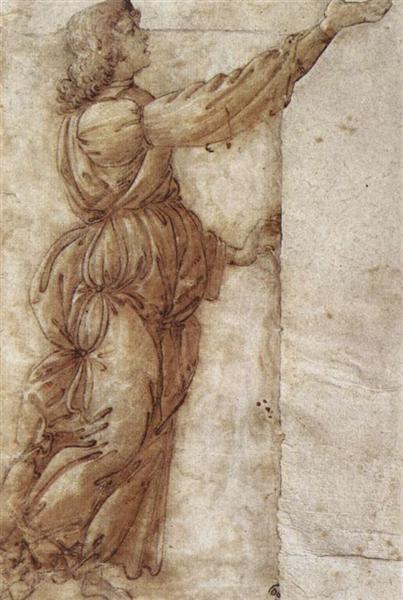Description
Sandro Botticelli's Angel, painted around 1490, is a remarkable example of the Italian Renaissance, in which the fusion of spirituality and beauty is manifested with impressive clarity. Although the specific context of its creation is not known with certainty, Botticelli was immersed in a period in which his style was at its peak, evidencing his particular mastery in the representation of celestial figures and an aesthetic that combines symbolic and sensorial elements.
Looking at the work, one perceives an angel whose face is of serene beauty, seemingly threatened by a deep melancholy. The figure features a halo of light that interacts with her golden hair, displaying the meticulous attention to detail that characterizes Botticelli's work. The softness of the lines and the delicate modeling of the face contribute to the almost ethereal expression of the character, evoking a fragility that is both divine and human. This treatment of the face and gestures is a distinctive feature of the Florentine master, who endowed his figures with an unusual psychological depth.
Colour plays a fundamental role in the work. Botticelli uses a palette that oscillates between soft and luminous tones, ranging from sky blue to Iberian white, highlighting the incorporeality of the angel. The background of the painting is a deep blue, suggesting a celestial space, which contrasts with the golden nuances and the subtly managed shadows on the angel's body. This use of colour not only reinforces the idea of divinity, but also establishes an atmosphere of peace and contemplation that invites the viewer to reflect on the meaning of the angel in a broader context.
The angel's position, slightly in profile, suggests movement and connection with the surrounding environment, suggesting an imminent ascent or descent between the earthly and heavenly worlds. This type of composition aligns with Botticelli's practice of creating visual narratives that transcend the merely aesthetic to address the spiritual and philosophical. The placement of the angel in the painting evokes the iconographic tradition of angelology, where these beings are not only messengers, but also protectors of men.
Although "Angel" is not one of Botticelli's best-known works, it should be remembered that his style influenced numerous contemporary and later works. His oil technique, his elegance in the representation of the human body and his focus on idealized beauty have left an indelible mark on the history of art. Compared to other Renaissance works in which the use of color and proportion were fundamental, Botticelli stood out for an emotional vibrancy and a visual dialogue that foster a more intimate connection between the work and the viewer.
Botticelli, whose work ranges from mythology to Christian themes, finds himself here at a crossroads that resonates with the spirit of his time. Angel reflects not only the evolution of his personal style, but also the sociocultural and spiritual context of the Renaissance, a period marked by a renewed interest in beauty and divine nature. This piece, though less widely known, deserves to be viewed with the same reverence as his other more famous works, such as The Birth of Venus or Primavera, and is a testament to Botticelli's rich ability to capture the sublime and the human in his art.
KUADROS ©, a famous painting on your wall.
Hand-made oil painting reproductions, with the quality of professional artists and the distinctive seal of KUADROS ©.
Painting reproduction service with satisfaction guarantee. If you are not completely satisfied with the replica of your painting, we will refund 100% of your money.

